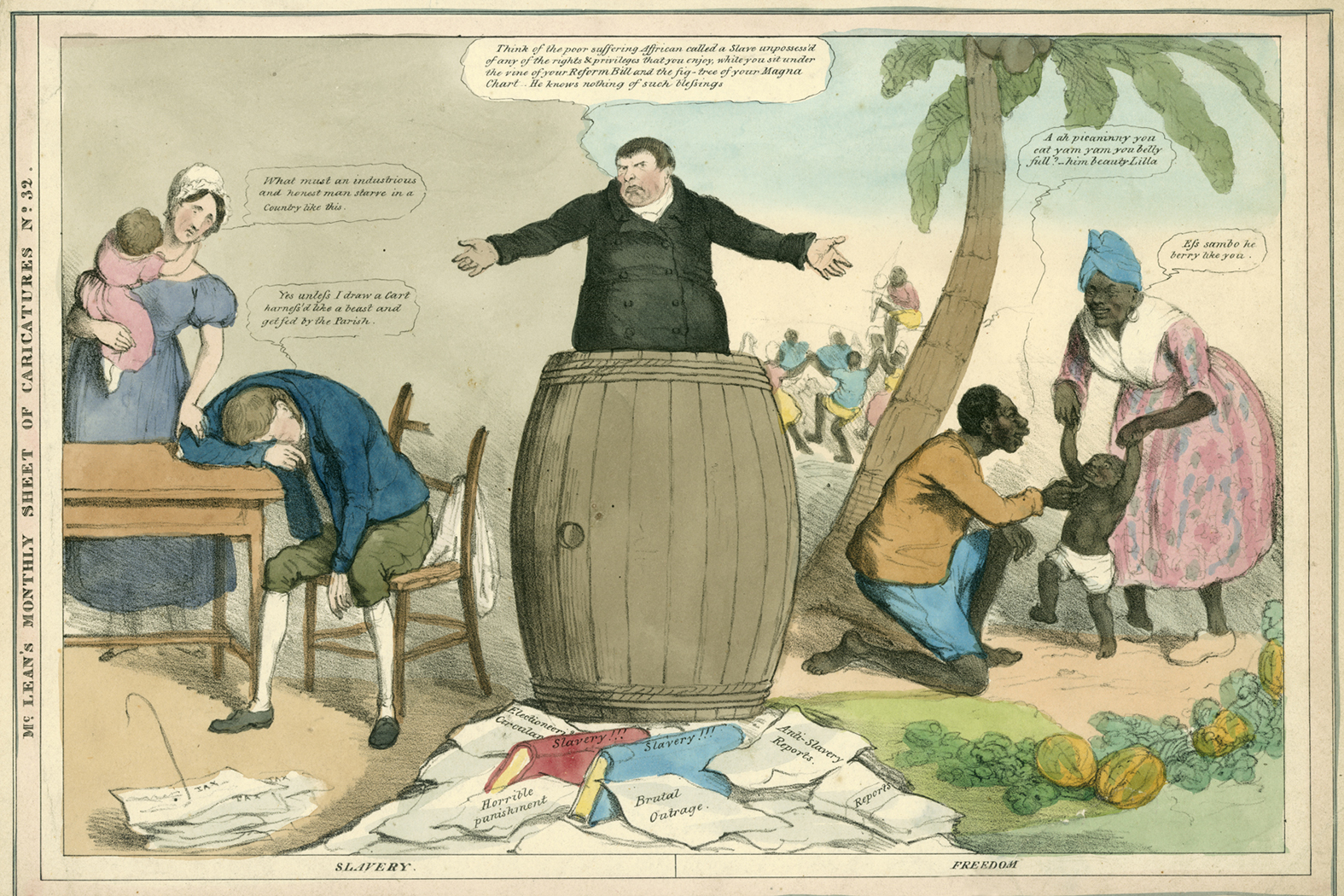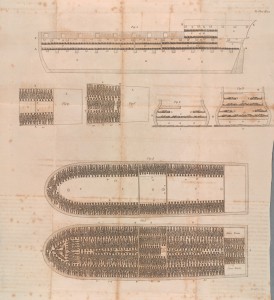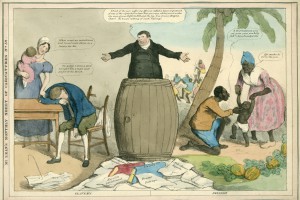
October 18, 2015, by Kathryn Steenson
Spotlight on Slavery
Today is Anti-Slavery Day in the UK, which was established to raise awareness of the estimated 20 million people worldwide currently living in slavery. This year also sees the 150th anniversary of the formal abolition of slavery in the United States. The 13th amendment to the Constitution declaring that “Neither slavery nor involuntary servitude…shall exist within the United States” was passed by Congress on 31st January, 1865, and ratified on 6th December.
It seems an appropriate time to highlight some of our online resources, using contemporary sources to explore the attitudes to slavery and those who fought for its abolition or supported the right to trade slaves. The resources aren’t intended to support a particular module or taught course, but is aimed at people with a general interest in history. The success of the recent films Lincoln (2012), Django Unchained (2012) and Twelve Years a Slave (2013) – winning an impressive 7 Oscars between them – shows that slavery still has the power to capture the imagination.
Mention of slavery immediately conjures up images of Africans crammed into the holds of ships and taken to plantations in the Caribbean. This was indeed the horrific fate of about 10 million people from the 16th to the 19th centuries. Earlier this year we created a small display in the Business Library on Jubilee Campus of material relating to the British transatlantic slave trade, with a slight emphasis on the trade aspect. There is an online version available as a pdf.

Plan of the hold of a slave ship, T. Clarkson, ‘The history of the rise, progress, and accomplishment of the abolition of the African slave-trade by the British Parliament’, London 1808. (Ref. Special Collection HT1163.C5)
A broader chronological and geographical context of slavery is provided in our Spotlight on Slavery resource. Slavery was a fundamental part of life in ancient civilisations, and even in Europe until the Middle Ages, a significant minority of the population were slaves or serfs who worked for a manorial lord. Others were kidnapped by North African pirates who raided coasts from Spain to as far north as Iceland, as happened in a 1627 raid which was graphically described in a later account.
The resource uses a variety of video, audio readings and images to bring to life the arguments used by both abolitionists and those who had investments in the slave trade. The complexities of the situation are typified by the staunchly pro-slavery attitude of Dr Michael Lee Dicker, whose letter lamenting privateer attacks on slave ships is one of the documents with an audio reading to accompany the digitsed image. His opinion is uncomfortably juxtaposed with his position as a founder member of the Exeter Royal Infirmary and his Quaker beliefs, as the Quakers were amongst the earliest groups to campaign against the practice. Other images include the now-iconic image of slaves crammed into the hold of a ship. The diagram was based on the measurements of a real slave ship which was designed to carry 450 slaves but in 1783 was documented to be carrying over 600 slaves.
‘Spotlight on Slavery’ was created by Liz Archer and Manuscripts and Special Collections, with input from the Institute for the Study of Slavery. ISOS was established in 1998 and brings together academics and postgraduates from various disciplines to discuss and research both historical and contemporary slavery and forced labour in all parts of the world and through all periods.
The documents featured in both resources are available for consultation in our Reading Room, and you can arrange a visit or find out more information from our website or by following us @mssUniNott. To see how the University is celebrating Black History Month, please see the BHM Blog.
No comments yet, fill out a comment to be the first


Leave a Reply